|
The above is a video on Bili Bili designed for Goju Ryu practitioners in China (or Chinese language speakers around the world). Essentially, Chinese language subtitles have been affixed - with Okinawan-Japanese concepts (cultural interpretations) translated into Chinese philosophical terms. This was uploaded on September 7th, 2022 - but I have not encountered it before. The direction of breathing is explained (stating there are two methods) - with 'kime' (決め) emphasised. This is written as '决定' (Jue Ding) in the Chinese language. 决 (決) = jue2 (ki) - certainty, dredge and kill 定 (め) = ding4 (me) - steady, fix and stabilise Interestingly, within Buddhist philosophy the Chinese ideogram '覺' is also catalogued (within modern Pinyin) as 'jue2' - and is related in structure to '决' (jue2) which is used above in 'kime'. This means the ideograms share a common root and depicts a related meaning. Whereas '决' (jue2) suggests a mind-enforced control over the body - '覺' (jue2) refers to the achievement of 'enlightenment' through the mind 'waking-up' - a state achieved only through following the utmost disciplined paths of bodily control. Perhaps the two variants of these ideograms are related. I would suggest this is the case on the grounds that '定' (ding4) - the second ideogram used within 'kime' - is also used to translate the Sanskrit term 'Samadhi' - which refers to a method of 'fixing' the awareness of the mind in one place (preventing the surface mind from moving about without control) - and thereby achieving a permanent 'stillness' of mind (which allows for the perception of 'emptiness'). Again, the physical body is subject to the utmost discipline (through the Precepts as taught in the Vinaya Discipline). The breathing is 'Daoist' in nature and involves a basic filling-up of the dantian with qi (inward breath into the lowest area of the pelvic girdle) - which is then redistributed throughout all the regions of the body (through the outward breath). The retained tension 'pulls' the qi into the dantian - and the maintained muscle tension 'extracts' the accumulated qi into the extremities (both breaths meditated by the awareness of the mind). The 'advanced' breathing is only hinted at and involves the microcosmic circulation of the qi. Qi is breathed into the dantian - which triggers the flow of qi up the Governing Vessel (which runs through the spinal column) and over the top of the head to the upper palate of the mouth. The tongue touches the upper palate with completes the circuit between the Governing Vessel and the Conception Vessel - which starts in the tongue, flows down the front of the body and through the grown and around to the perineum - where the Governing Vessel begins. The Sanchin breathing strengthens and maintains this Daoist breathing.
0 Comments
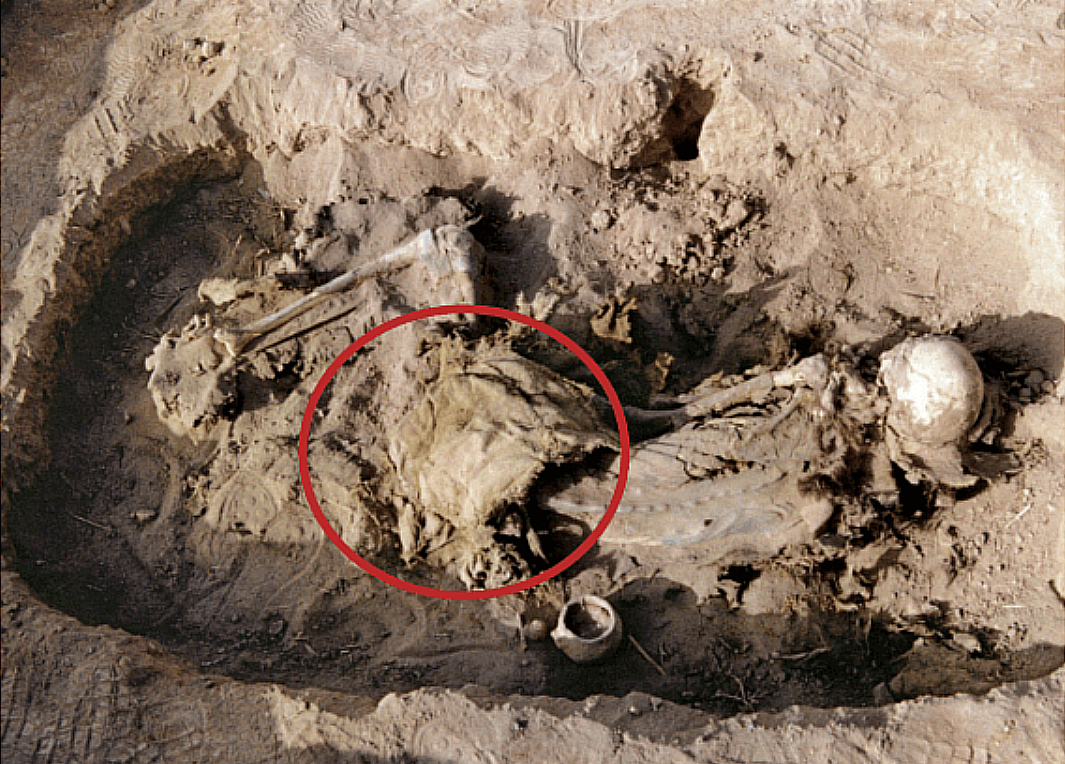 Dressed in a hide coat, wool pants, and leather boots, the rider was buried with her saddle “placed on her buttocks as if she was seated on it,” the team note. And it clearly isn’t just for show: the saddle shows “[o]bvious traces of repair,” they write, showing that it was “intensively used and maintained” throughout its lifetime. Recently, an international archaeological team discovered the earliest known saddle at an excavation site in China. The saddle was found in a tomb in a cemetery in Yanghai, Xinjiang, China. The tomb was built for a common woman who was wearing what seems to be a 'saddle' - positioned so it looks as if the deceased person was still sitting upon it - as if in life. Research shows the tomb owner and saddle are from about 2,700 years ago. Previous research has found that the domestication of horses first occurred around 6,000 years ago, although during the initial stages of domestication, the animals were used solely as a source of meat and milk. It is thought that horse riding took another 1,000 years to develop. Shortly thereafter, riders began looking for ways to cushion the forces of riding. Researchers believe saddles likely originated as pads strapped to a horse's back. The saddle found is constructed externally from cowhide and is internally padded using deer and camel hair - as well as straw filling. This saddle was designed to assist riders sit with greater stability whilst sat on horseback - so that arrows could be fired from a bow with greater accuracy - whether the horse was standing still or engaged in movement. There are no stirrups on this Xinjiang saddle - as is to be expected. However, a simple stirrup has been found in ancient India dating to the 2nd century BCE - but stirrups were not used by the Greeks or Romans and did not appear in Europe until the 8th century CE. This saddle found in China predates the ancient saddles previously found in the Central and Western Eurasian Steppes. The earliest known saddles date back to between the 5th-3rd centuries BCE - leaving researchers to conclude that China is the earliest known civilization in the world to have designed, made and used saddles. Chinese Language Text: English Language Text: 2,700-Year-Old Saddle Found In Ancient Chinese Tomb Is Oldest Ever Discovered
Dear Nick The footage and graphics contained in the following (Chinese language) video are very interesting when it is understood that the bones are aligned, the bodyweight is dropping into the ground (rooting) and a rebounding force is rising. The mind is calm and expansive whilst the joints, limbs (and sections of the torso) are 'rounded' (concave and convex). When the joints are 'rounded' the ligaments and tendons are relaxed and extended (like a drawn bow-string). Although the muscle are relaxed and released from any unnecessary tension - there is a natural 'torque' (twisting tension) - again, similar to a bow-string that is drawn with just the right amount of tension - and no more. This is important as most people are far too 'tense' and 'rigid' as a habit. Once the awareness penetrates the centre of the bones and all this is achieved - this advanced understanding spreads all over the body and is held in place by an expanded awareness. It can then be reproduced in any and all Form movements and in any self-defence situations. The bodyweight drops down through the centre of the bones (stimulating the bone marrow) and 'rebounds' up from the ground - also through the centre of the bones - and can be emitted through any part of the body. This power production can then be augmented by the localised speed of a limb or position (angle) of the attacking body-part. A perfectly timed blow can be massively magnified in power by catching an opponent 'running in' onto a punch or kick, etc. Here, in this beautiful Shaolin (Europe) video we can see how the bow is correctly 'drawn': All this is achieved through holding the '站桩' (Zhan Zhuang) - or 'Standing like a Stake' - ('Holding the Ball') position. Although I focus upon the 'rounded' structure of this exercise - its name traditionally derives from a foundational 'stake' or 'pile' (shaped like a 'rounded' Western telegraph pole) that was driven deep into the ground (or sea-bed) which served as an anchoring (and firm) support for a building. There is 'rootedness' (dropped bodyweight) and there is expanding 'stabilisation' (rebounding and rising) power! This is an analogy worthy of further consideration - as it is this psychological and physical 'roundedness' that makes all this ability possible!
The Development of Yongchun White Crane Fist – the Basis of Okinawan Karate-Do! (4.11.2022)11/5/2022 (Translated by Adrian Chan-Wyles PhD) Translator's Note: I read through (and carefully translated) this meandering Chinese language text regarding the known history of Fujian White Crane Fist! To make sense of the context - I had to reference other Chinese language historical texts in an attempt to decipher what exactly is being said! Even so, as much of this genre of (folk) history is entirely 'local' in nature, even (contemporary) ethnic Chinese language speakers do not understand the what exactly is 'meant' by the words and phrases being used. We must use our experience and knowledge to establish the most likely meaning. There appears to be a subtle blend of fact and myth - perfectly entwined - so that it becomes difficult to tell one aspect from the other! During this interpretive process, we must remain anchored within historical 'fact' - but where is the 'fact' we must remain anchored within? What we do know is that somehow a) this martial art does physically 'exist' through a discernable history, and b) as a distinct body of knowledge it ended-up in the hands of Higaonna Kanryo! ACW (5.11.2022) White Crane Fist (白鹤拳 - Bai He Quan) is often referred to by the geographical indicator of ‘Yongchun’ (永春). This Style of martial arts is just one of the of many developed by the Han nationality throughout the Fujian area. It began to emerge as a distinct martial arts Style during the latter Ming Dynasty (1368-1644). From its root source, four distinct lineages have developed: 1) Flying (飞 - Fei) 2) Singing (鸣 - Ming) 3) Sleeping (宿 - Su) 4) Feeding (食 - Shi) These four variations of White Crane Fist all manifest in slightly different and specific ways, so that a unique and distinct Style is evident in each case. These differences stem from the practitioners emphasising particular traits observed in the defensive and aggressive behaviour of the White Crane species of bird. All of this speciality is known today as the White Crane Fist Style. According to legend, this Style originated within the Funing (福宁) Prefecture, Fujian Province – today known as Xiapu (霞浦) County. As a Style, it developed out of the ‘external’ (外 - Wai) Shaolin Fist (少林拳 - Shaolin Quan) method taught to Master Fang Zhonggong (方种公) at the ‘North Gate’ (北门 - Bei Men). He taught his only child (his daughter) ‘Fang Qiniang’ (方七娘) - and it is Fang Qiniang who is considered the ‘Founder’ of White Crane Fist. Soon after she was born – Fang Qiniang’s mother passed away from illness. Her father believed that his only daughter should be strong and stand tall – just like a man – and he taught her to practice martial arts every day. Fang Qiniang eventually married ‘Zeng Si’ (曾四) - who was a native of Yongchun County situated within the Quanzhou area of Fujian province (although some records suggest his family originally came from Zhejiang – before moving into Yongchun and resettling). As Fang Qiniang lived and taught her Style in ‘Yongchun’ it is referred to today as being ‘Yongchun White Crane Fist’. The White Crane Fist specialises in generating vibrating and shaking (弹抖 - Dan Dou) power (劲 - Jin) of both arms. The open-hand ‘Palm Law’ (掌法 - Zhang Fa) method emphasises a penetrating and piercing power which is similar to an arrow hitting an opponent after being fired from a bow – but devastating the opponent at very close-range. This method is supported by penetrating footwork that decisively advances and retreats – footwork that also ‘pretends’ to advance and retreat – causing confusion and mistimed reactions in an opponent. Explosive force (力 - LI) is generated by the White Crane Fist practitioner when taking advantage of an opponent’s errors. For this to happen, the joints and fingers of the White Crane Fist practitioner must be ‘strengthened’ and appropriately ‘conditioned’. Stepping must be both precise and diverse. Every blow must be thrown with explosive power. The arms must shake, vibrate and tremble with ‘hard’ and ‘soft’ energy continuously interchanging in a manner which cannot be predicted or understood by the opponent. This is held together by the bodyweight smoothly ‘dropping’ and ‘rising’ continuously and without interruption. Each Style of White Crane Fist presents these techniques in different and varied ways. Within the folk storytelling developed during the early Qing Dynasty, it was said that ‘Crane Immortal’ (鹤仙 - He Xian) taught Fang Qiniang – whilst others state that Fang Qiang was taught only by her father – a native of Funing! Whatever the case, all stories agree that Fang Qiniang was the Founding Patriarch of the White Crane Fist Style! Fang Qiniang was clever and pretty – and was committed to learning martial arts! As Fang Qiniang refused to get married – she was banished to a local Buddhist Temple known as ‘Bai Lian’ (written as ‘白练’ or ‘白莲’ - the second variant appearing to be a play on words) meaning both ‘White Lotus’ and ‘Pure Practice’. Her Buddhist teacher was said to be the ‘Crane Immortal’ (鹤仙 - He Xian) who came down to Earth to instruct her in the art of ‘White Crane’. Fang Qiniang had to combine hours of seated Ch’an meditation with the continuous observation of the ‘hard’ and ‘soft’ movements of the White Crane birds that inhabited the temple grounds. (Another version worthy of consideration is the following story: One day, Fang Qiniang was immersed in the shuttle weaving on a traditional loom. Suddenly, a White Crane bird flew gracefully into the area - hovering near her roof and looking down. The White Crane bird finally flew down to the floor of the hall - standing quietly next to the loom. Looking up at Fang Qiniang – the bird refused to fly away and stood quietly for a long time. Fang Qiniang was very surprised by the inner stillness and outer poise of this bird. Fang Qiniang picked up the shuttle box and threw it – but the White Crane remained unruffled and simply ‘spread its wings’ in a graceful manner – and intercepted the shuttle box perfectly – causing it to bounce back with an effortless force. Fang Qiniang raised the bamboo inkstone used for weaving and attempted to strike the White Crane. Unexpectedly, the White Crane ‘shook’ its body - and the bamboo inkstone was bounced back! When Fang Qiniang saw this behaviour she was impressed and puzzled! On this day, the White Crane bird with its plump, white feathers refused to fly away! When night fell, Mr. Fang Zhonggong asked Fang Qiniang to bring out some white rice and sweet potato to feed the White Crane in the hall! Despite all this movement – the White Crane refused to move but remain quiet and still – but always alert! These events were a preparation for a white-haired Immortal to visit the Fang family and convey the martial art of the White Crane Fist!) Once these movements (and reactions) were understood – Fang Qiniang had to integrate this new knowledge into her already existing Shaolin martial arts practice. This process took four years to achieve, and the White Crane Fist Style of martial arts was developed! As the ‘Bai Lian’ Temple became a well-known and respected centre of gongfu practice and given that Fang Qiniang was a renowned Buddhist monastic – she changed the name of the temple to ‘Jiao Lian’ (教练) or ‘Teach Practice’ Temple (寺 - Si). One day, a man named ‘Feng Si’ visited the temple and respectfully requested that Fang Qiniang teach him the White Crane Fist Style she had developed. He trained as her Disciple for over ten-years – and eventually the two people fell in love. This prompted Fang Qiniang to leave the temple and resume the lay life so that the two could get married. This is how the White Crane Style was taken back to Yongchun (the place of Fang Si’s birth) situated in Quanzhou - and took root in this part of Fujian province! The couple had numerous children and passed this family Style. The constituent originating lineages included are: White Crane Fist (白鹤拳 - Bai He Quan) Bai Lian Temple (白练寺 - Bai Lian Si) a) ‘Crane Immortal’ (鹤仙 - He Xian) b) ‘Fang Qiniang’ (方七娘) c) ‘Zeng Si’ (曾四) Southern Shaolin Fist (南 少林拳 - Nan Shao Lin Quan) a) ‘Fang Zhonggong’ (方种公) - Father b) ‘Fang Qiniang’ (方七娘) - Daughter c) ‘Zeng Si’ (曾四) - Husband of Fang Qiniang & Son-in-Law of Fang Zhonggong The foot work of the White Crane is light, exact and yet ‘heavy’ when ‘heaviness’ is required! The White Crane can move across the ground – barely touching the floor – like snowflakes falling from the sky! This is the foot work of heroes! Martial arts training is beneficial for the development of the mind and body! The White Crane Fist puts a great emphasis upon physical fitness! As a result, the White Crane Fist is masterful in attack and defence! The White Crane Fist is simultaneously both simple and enriched! These are the twenty defining attributes (and forms) of the White Crane Fist: 1) The White Crane generates the shape. 2) The shape manifests in the fist! 3) The form is taken from the name. 4) The name suggests elegance as its crowning glory 5) The White Crane protects the centreline throughout the upper, middle and lower parts of its body. 6) The Thirty-Six Divine Sky Gods 7) The Seventy-Two Broad Earth Demons 8) The One-Hundred and Eight Dharmas 9) The White Crane Flashes its Wings 10) Thirteen-Step Vibrations 11) Seven Steps – Three Battles 12) Thirteen Grand Protections 13) The White Crane is both ‘firm’ and ‘not’ firm. 14) The White Crane is both ‘soft’ and ‘not’ soft. 15) Shaking and vibrating with strength from the ground upwards. 16) There is a continuous change of skilled applications. 17) The structure is precise and always clearly maintained. 18) The awareness is always clear regarding offence and defence. 19) Always demonstrate mercy before raising your hand. 20) When the time comes to raise your hand – show no mercy! Higaonna Kanryo [1853-1915] (东恩纳宽量) was the first Okinawan to learn the White Crane Fist. From the Chinese gongfu he took back to Okinawa – the ‘Empty Hand Way’ (空手道) or ‘Karate-Do’ would be eventually developed. It is the White Crane Fist which serves as the technical foundation to the development of Okinawan and Japanese Karate-Do. In other words, the ‘Empty Hand Fist’ (空手拳) or ‘Karate-Ken’ is really what is called ‘Yongchun Fist’ (永春拳 - Yong Chun Quan) in China! It is believed that the White Crane Fist is part of the ‘Shaolin Five Ancestor Fist’ (少林五祖拳 - Shao Lin Wu Zu Quan) tradition. This tradition developed in the Quanzhou area of Fujian province and is linked to the Southern Shaolin Temple situated in this area. The five Styles which form this System are as follows: a) White Crane Fist (白鹤拳 - Bai He Quan) b) Monkey Quan (猴拳 - Hou Quan) c) Arahant Fist (罗汉拳 - Luo Han Quan) d) Bodhidharma Fist (达尊拳 - Da Zun Quan) - also referred as ‘Mind Intention’ Boxing (心意拳 - Xin Yi Quan) e) Grand Ancestor Fist (太祖拳 - Tai Zu Quan) Although it is agreed that Fang Qiniang invented the White Crane Fist Style – it was her husband (Zeng Si) who is often cited as teaching the art prolifically within the Yongchun area. Historical records suggest that the couple lived in the area during four different time periods and were prone to travelling. It seems that the couple did not permanently stay in the Yongchun area, but they did favour the place as a base of operations – and it is from here that a renowned centre of White Crane Fist practice developed. The implication is that they settled there toward the end of their lives together. Although the historical text I am referencing is ‘old’ (and difficult to contextualise), there is an indication the couple taught White Crane Fist near to the ‘West Gate’ (西门 - Xi Men) of Yongchun, to the rear (and ‘outside’) of the ‘Name Temple’ (庙 - Miao) pertaining to the ‘Gu’ (辜) family. Technically speaking, this would be a Confucian Temple maintained by the local Gu family (designed only for the use of that family) comprised of a hall for social gatherings (which could include gongfu practice), and an area for the cremated remains of the Gu ancestors stored in large, sealed earthenware pots (together with pictures and biographical texts). Later, out of respect for Zeng Si, this training area became known as the ‘Zeng Martial Temple’ (曾武馆 - Zeng Wu Guan). This might suggest that the Gu Temple was eventually taken over as a centre for White Crane Fist practice – and was locally known by the above variant. This how the White Crane Fist Style took root within the Yongchun area. During the more than one-hundred years between emperors Kangxi (r. 1661-1722) and Qianlong (r. 1735-1796) - the White Crane Fist was widely disseminated and exchanged both inside and outside Fujian province. As an effective martial art favoured by the local population, it was continuously absorbed, summarized and improved upon – a process which greatly enriched and developed its technical and theoretical content. This important historical (developmental) period may be considered the ‘heyday’ of the White Crane Fist Style. The different names associated with this Style of martial arts are: i) White Crane Fist (白鹤拳 - Bai He Quan) ii) Fujian White Crane Fist (福建白鹤拳 - Fu Jian Bai He Quan) iii) Fujian Shaolin White Crane Fist (福建少林白鹤拳 - Fu Jian Shao Lin Bai He Quan) iv) Yongchun White Crane Fist (永春白鹤拳 - Yong Chun Bai He Quan) v) Southern Shaolin White Crane Fist (南少林白鹤拳 - Nan Shao Lin Bai He Quan) Between the reigns of the Qing Dynasty emperors Kangxi, Qianlong and Jiaqing (嘉慶), that is to say from around 1664-1821 – the record books suggest that the White Crane Fist Style has been passed on by five or six generations of descendants in the Yongchun area – depending upon how lineages are interpreted and understood. It was one of these lineages which was eventually taken back to Okinawa and served as the foundation for the development of modern Karate-Do in all that art’s distinct and diverse variations. Chinese Language Sources:
If a practitioner of traditional Chinese martial arts spends twenty, thirty or forty years perfecting his or her art – then such an individual will experience many different levels and layers of reality as the ageing process unfolds. Of course, much of this will be circumstantial and culturally conditioned (varying from place to place, country to country) - but the ongoing experience of observing the inward biological and psychological process will always possess a certain universal reality common to all human beings. This is true despite many modern people linking their physical activity to the notion (and vagaries) associated with modern sport, commercialism and entertainment, etc. Therefore, many people living in the modern age often think that any sustained physical activity should cease around the age of thirty years old – as the first glimmer of the ageing process begins to make its presence felt! This idea seems to advocate the passive ‘giving-in’ to the ageing process and simply settling for a body that can no longer function as does the body of an eighteen-year-old – and which gets less able as the decades pass due to a terminal inactivity.
A genuine martial artist seeking mastery of body and mind must acknowledge and accommodate the ageing process. As the inner processes and the outer structures of the physical body transform, the traditional Chinese approach has always presented the ageing process as a doorway to a higher form of awareness, perception and physical ability. The modern, Western approach states that the human body becomes weaker the longer it lives. The onus upon this thinking is that this is the most meaningful interpretation of the ageing process and that no other view of the ageing process is required. Linked to this idea of a decrepit body is an entire medical industry offering expensive mechanical devices that assist the body as it weakens – together with entire rafts of various medicinal treatments designed to lighten the ageing process. This is only for the wealthy, of course, and although the scientific alleviation of the ageing process may well be a valid and important one if it were not so exploitative – my point is that as functioning individuals – we are responsible for our own awareness as it functions throughout the biological body and permeates the physical environment. There is nothing wrong with being ill, disabled or otherwise incapacitated. Ageing and illness are biological inevitabilities and should not be denied in anyway. The awareness capacity, however, as far as I am concerned (as I enter my 55th year of life) – is the only way a human being can adjust him or herself to the ever-changing circumstance that defines the ageing process. Not just being ‘aware’ in a passive manner but being ‘aware’ in a proactive manner that permeates the atoms and molecules of the physical body, and which strives to moderate behaviour throughout the physical body. Ironically, being ‘still’ in exactly the correct manner is an important part of traditional Chinese martial arts, which is the foundation of an enhanced (and evolutionarily) advanced ability to manifest the human body within the physical environment. This means that the manner in which the inner human body is perceived changes completely when the ageing process unfolds. Indeed, the ‘internal’ and ‘integrated’ methods of advanced Chinese martial arts practice are dependent upon being ‘old’ and the experience of getting ‘older’. As the out of date (and ‘lazy’) habits of youth fall away, then ‘new’ and more ‘intelligent’ methods of generating stability and power must be cultivated. Extraordinary amounts of stabilising power must be generated and sustained with as little conventional effort as possible. Conventional effort is the driving mechanism of youth which changes as the ageing process advances. It does not ‘disappear’ as many think but transforms and evolves – but many remain completely unaware of this developmental process. This is where the shallow (commercial) culture of the modern West fails the very individuality it creates. This is exactly where the ancient ideas of evolving conscious awareness and physical abilities come into play. When striking the heavy bag, the torso and limbs feel simultaneously ‘light’ for speed and ‘heavy’ for stability. The body is ‘relaxed’ whilst the limbs and torso are positioned perfectly so that the dropped bodyweight can be effectively rebounded from the ground and channelled into the target through the centre of the bones (which feel ‘hollow’ when performing this function). Furthermore, the ‘weight’ of the heavy bag can be momentarily absorbed into the bones and joints of the attacking body (that is the ‘hollow channels’) – before being dramatically expelled back out and into the heavy bag itself – being added to the bodyweight and effortlessly increasing the all-round impact of the punches, kicks, elbows and knees, etc. Meanwhile, as the ageing process unfolds, a tangible sense of space is permanently perceived as existing throughout the inner body which is filled with an energy that is vibrant, full of light and is a combination of physical bodyweight properly used – and an enhanced sense of psychological ‘awareness’ (which also expands outward and into the physical environment). I believe that this is a preparation for old-age and the eventual dying process – whereby the physical body drops-away and the psychological awareness folds-in upon itself. Holding the horse stance (馬步 - Ma Bu) requires a stable, physical structure which is permanently held regardless of the emotional or physical feeling’ that is present. This includes – but is not limited to – the pain experienced in the muscles when deep stances of this nature are assumed and maintained over a set period of time. The structure must prevail over every other consideration. The structure must prevail over a determined time scale no matter how tired the mind and body appear to manifest. The point of this mode of psychological and physical discipline is that although the physical structure is deemed ‘permanent’ for the duration of the exercise – the ‘feeling’ capacity of the mind and body is understood to be fleeting, changeable and impermanent. This being the case, feeling tired, distressed or overwhelmed is not a good enough ground to ‘stop’ holding the physical structure of the horse stance! The advanced holding of the horse stance must ‘root’ the practitioner to the ground, whilst the inner energy is circulated through micro and macro-cosmic orbits (simultaneously or alternatively as required), with a deep and full breath that empties and fills the (mind) and body without fail and in a continuous and powerful manner. The mind should be calm, expansive and all-embracing so that the physical body and immediate environment seem to manifest within the fabric of the mind all at once! Energy flow is optimised in an existential and historical manner, with the individual mind ‘detached’ from both whilst permanently interfacing with reality in an indifferent attitude of all-encompassing awareness. All types of feeling is understood to be ‘fleeting’ - whilst the powerful nature of the horse stance is considered the essence of all martial ability. The structure of the Book of Change (Yijing) hexagram is the model which all effective horse stance training should follow. The legs are the bottom two lines, the torso (and arms) is the second to lines) and head is the top two lines. Although not representing any particular hexagram (six-lined structure), the body of the martial artist holding the horse stance represent ANY and ALL of the sixty-four hexagrams that transition from into another. In my training, I often visualise the second hexagram of ‘earth’ as the six ‘yin’ lines symbolise the ‘dropping-down’ activity of ‘water’ sinking into the ground! Of course, as the energy rises up the spine, I visualise hexagram one – or ‘divine sky’ to assist in the ‘lifting’ of force! Any part of the body can represent any hexagram, whilst the entire situation can also be represented a an over-all and defining hexagram! This is an area of study that must be built-up over-time and which requires and in-depth and drawn-out study of the Book of Change (Yijing).
Foundational Taijiquan is practiced by those with health or mobility issues. This is a gentle set of physical movements designed to get a person moving around in a dextrous manner. Taijiquan can be very useful for those who are not fit and need some type of co-ordinated physical movement combined with deep and full breathing. With repetition this training process can build strength in the legs, improve balance and dexterity, and enhance the circulation of oxygen throughout the body by relaxing any and all unnecessary muscular tension. Through aligning the bones (and dropping the bodyweight into the ground), the bones, joints, ligaments and tendons are made more ‘robust’ through correct weight-bearing! Many people spend years working on this practice and quite often gain a considerable suppleness through this relaxation and the sharpening of ‘awareness’ in the mind! For many practitioners in the West, Taijiquan is encountered only later in life, and quite often is not the common spectacle it is in China and throughout many diasporic Chinese communities. The popularity of basic Taijiquan (even in China) relies on quick courses which involve a ‘coach’ who has learned a Short Taijiquan Form over a six-week time period and is then tasked with conveying these movements to two or three classes of students a few times a week! This approach certainly gets the basic techniques ‘out there’ and gives dedicated individuals a training platform which they can build upon at a later date. This can involve longer and more complex Taijiquan Forms (of which there are many Styles), and can even include competitions, seminars and demonstrations, etc. However, even if this type of practice results in winning a World Title for ‘moving about effectively’ - this is still not the complete Taijiquan practice. If you want to master the proper and in-depth practice of Taijiquan, you will have to find a genuine gongfu Master who is knowledgeable in Daoist self-cultivation technique and knows how to ‘fight’ in real life without compromising the sublime spiritual vision that underlies the Chinese martial arts. Following decades training with Master Chan Tin Sang (1924-1993) - I now occasionally have the honour of meeting the odd male or female Taijiquan Master through ‘invitation’ so that my physical and spiritual understanding of Taijiquan can be ‘tested’ and ‘confirmed’. Such encouragement ‘dissolves’ difficult to see ‘habitual blocks’ in the mind and body and moves onward or deeper into penetrating the empty essence of the Dao – as all movement is equally ‘empty’ and ‘still’ - this is why an immense power emanates through the channels that connect the ‘broad earth’ to the ‘divine sky’. This is why every perfect technique is both immensely ‘powerful’ and equally ‘empty’ from beginning to end – and within this freedom is vibrating a positive light that is a combination of wisdom, loving kindness and compassion for the entirety of existence! Advanced Taijiquan is a product of a perfected state of mind and body that expresses the perfect Taijiquan technique – but which is no longer ‘limited’ to the practice of the physical Taijiquan Form - which naturally manifests every moment of everyday, whether formally training, lying in bed, going to the toilet, meditating, making love or carrying-out your work! As many of you reading this either have a low opinion of Taijiquan or believe Taijiquan cannot be used for combat (viewpoints that are a product of a lack of direct cultural knowledge), the manner in which Taijiquan technique is used on a kick-bag is simple and straightforward. Advanced Taijiquan expresses the entire ‘bodyweight’ through any part of the body without any undue effort. Just as the bodyweight ‘drops’ into the ground through the aligned bone-structure – a re-bounding force naturally rises up continuously and without a break in the circuit. This remains true just as long as a practitioner is stood within a strong gravitational field. I start a suitable distance from the kick-bag and carry-out a mini-form set of co-ordinated movements that brings my body nearer the kick-bag and sets-up the power-technique! Today, I started with the left leg forward and threw on the spot a left-lead punch, right-reverse punch and left-lead punch. Weight shifted back onto the reverse right-leg (with bent left-leg forward in ‘cat stance’) and I throw a front-snap kick – landing forward on my properly placed left-foot and bringing the weight onto the left-leg. The power-shot is the reverse right roundhouse-kick – which swings through the air and impacts the bag with considerable and unhindered power! The process is repeated on the other side of the body and I repeat this for three-minutes. Any combination of techniques can be used that test the ‘smoothness’ of Taijiquan technique on the one-side – and the unbroken (and considerable) power on the other. Obviously, being ‘rooted’ is important as is continuously changing sides so that left and right are properly trained and tested (as true combat is unpredictable unlike fighting with rules during sporting encounters). The mind should be calm, still, aware and all-embracing so that it is ‘reflective’ of all phenomena (like a mirror). The Buddhist Surangama Sutra explains this principle, as do various Daoist texts such as the Laozi and Zhuangzi, etc, and the ‘Book of Changes’ (Yijing). Not everyone is trained to this depth of Taijiquan attainment, and not everyone wants to be trained to this degree – but it is an option with the proper training and instruction.
Starting from around 16 years of age with a ruck sack of around 15Ibs - 20Ibs - a practitioner should start running over various types of terrain, and for different distances at various times of the year. The point is to 'sweat' and a number of clothing layers should be worn. This practice is a combination of weight-lifting and running. As the body (and mind) strengthens, the weight should be slowly increased. As a grown man, the weight should reach 56Ibs (perhaps 40Ibs for a woman) - but temporary increases up to 76Ibs can be used for short periods. Distances should vary from 1.5 miles to 5 miles on paved roads, but it is also good to run on grass and occasionally on sand. Much longer distances can be used if running is replaced with hiking. If a practitioner is only just beginning to get fit, or is recovering from injury or illness, always start by walking over a certain distance. It is a good idea to lift free weights for a time prior to ruck sack running so as to build the bones, muscles and joints, and to practice ordinary running (and periodic sprinting) to condition the cardiovascular system. For many, just 'wearing' the iron vest for any extended period of time is very difficult to do, and creates substantial muscular pain in the neck, shoulders and back, as well as in the knees, ankles and various parts of the feet. This is normal and will pass. Just as the iron vest compresses the body - the structures of the body 'resist' and generate an outward counter-pressure - which generates a substantial repelling force. This is how the body withstands and rejects any incoming power. Furthermore, carrying this weight forward generates tremendous 'forward' momentum which is very difficult for an opponent to 'stop', and which has the effect of 'uprooting'. All the blood vessels are opened and strengthened through a stimulated circulation, the bones are hardened and the both strengthened and relaxed in a coordinated and dynamic manner. The mind becomes calm and all expansive as the qi (vital force), jing (essential nature) and shen (all embracing empty mind) are thoroughly cultivated.
|
AuthorShifu Adrian Chan-Wyles (b. 1967) - Lineage (Generational) Inheritor of the Ch'an Dao Hakka Gongfu System. |

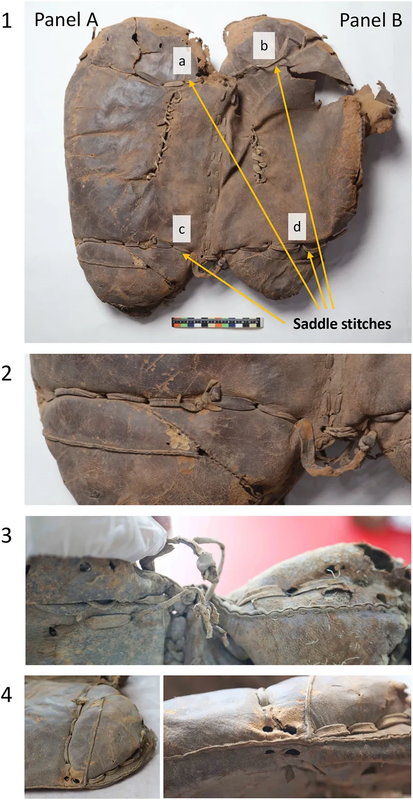
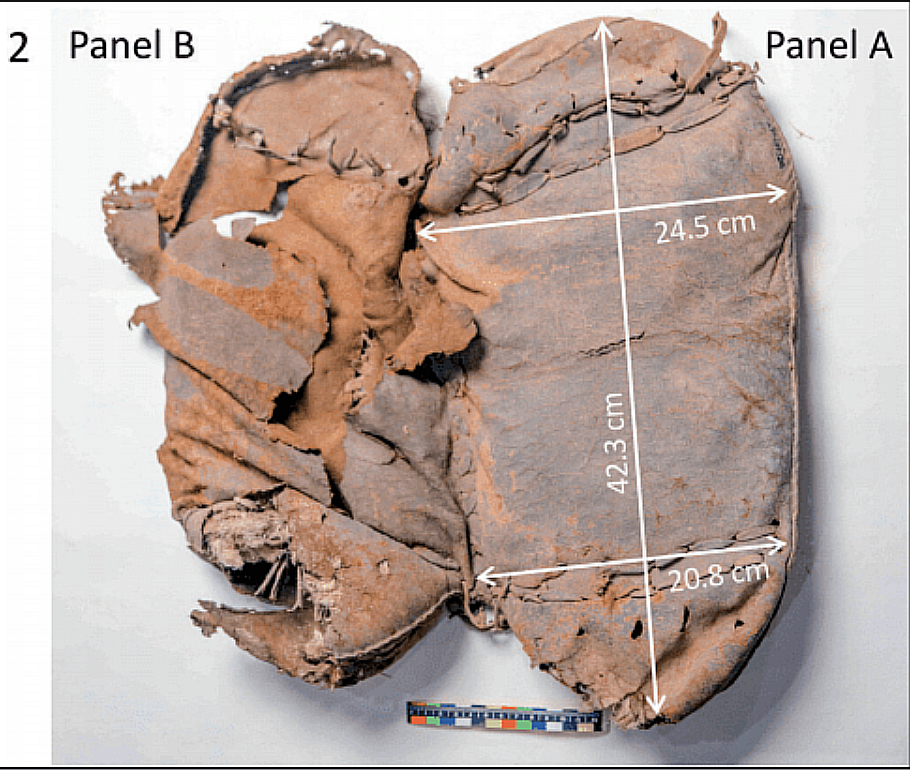
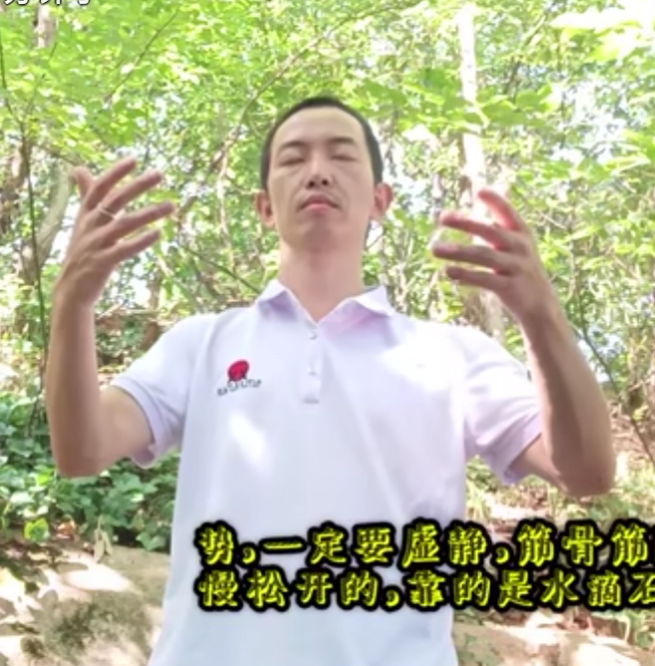
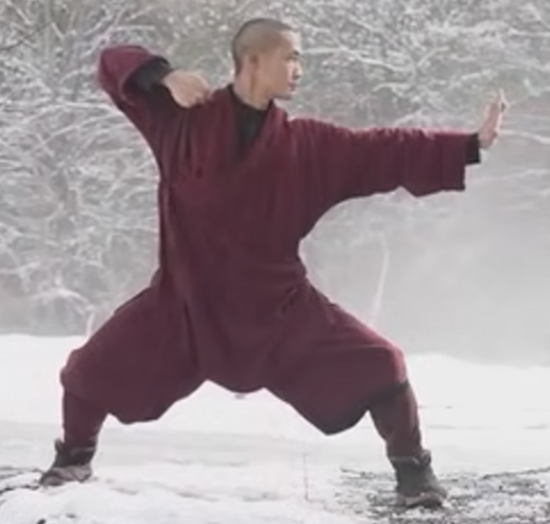
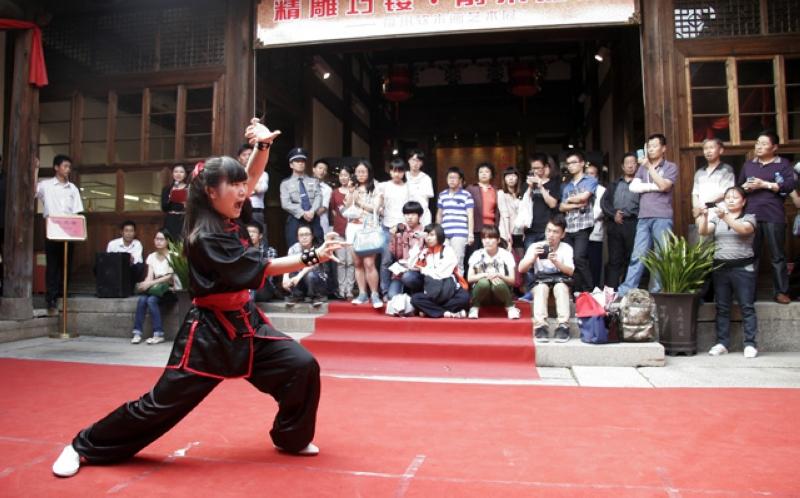
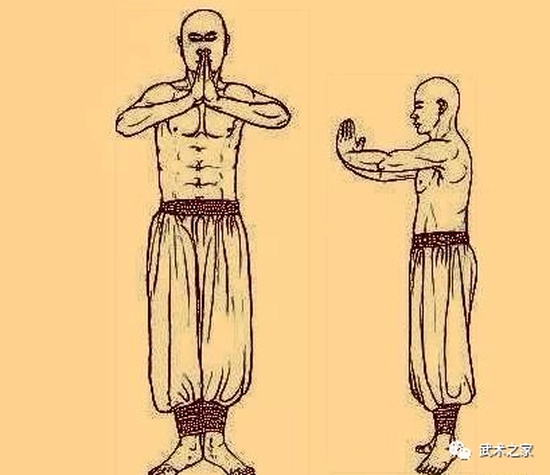
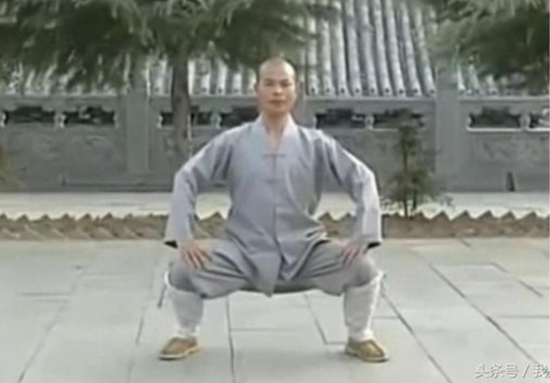
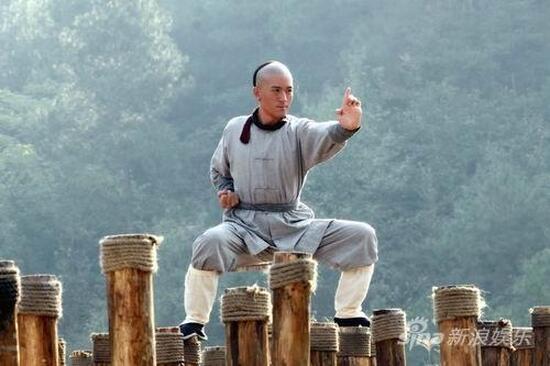
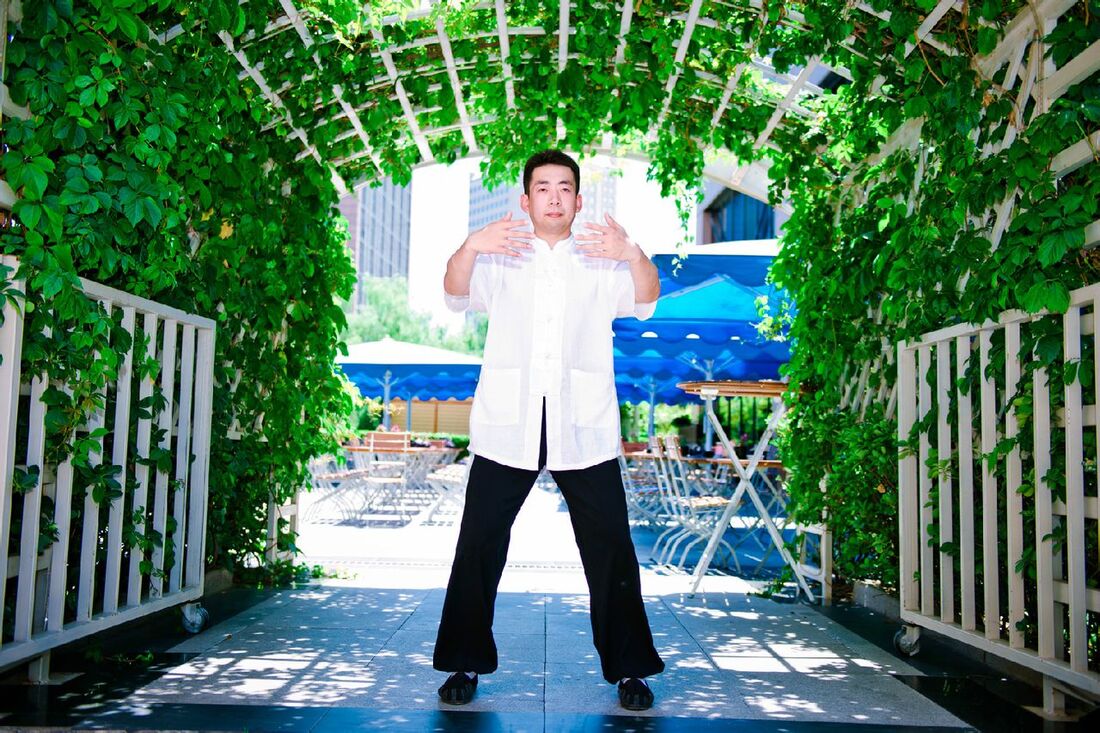
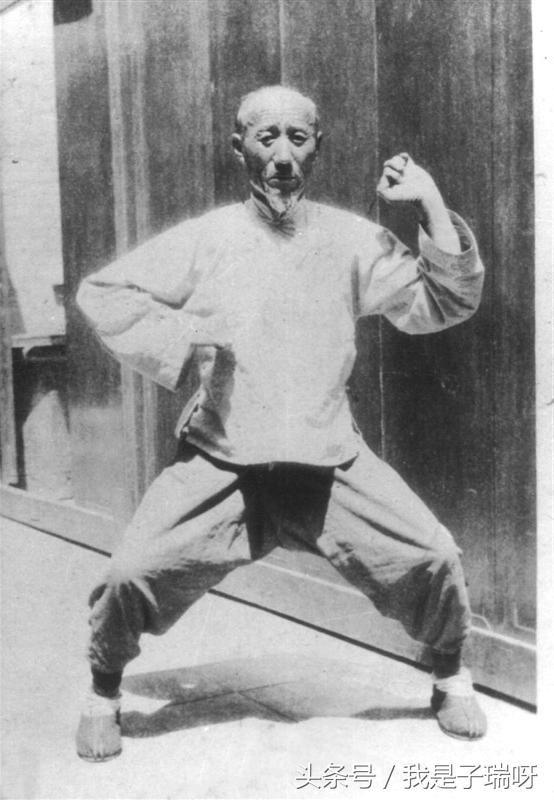
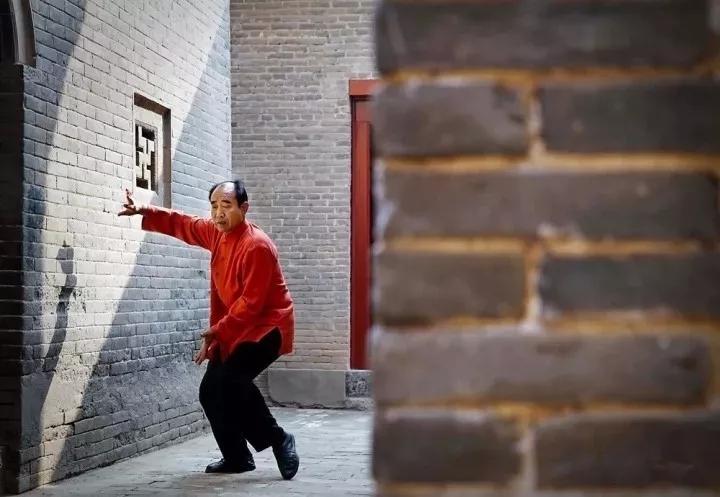
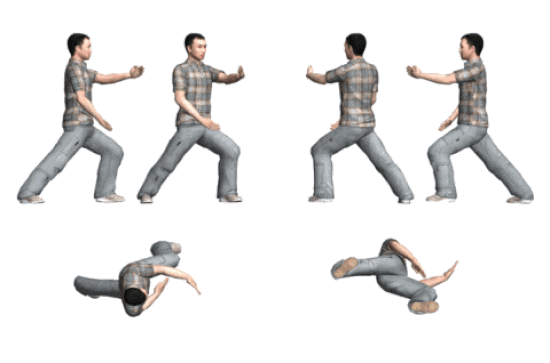
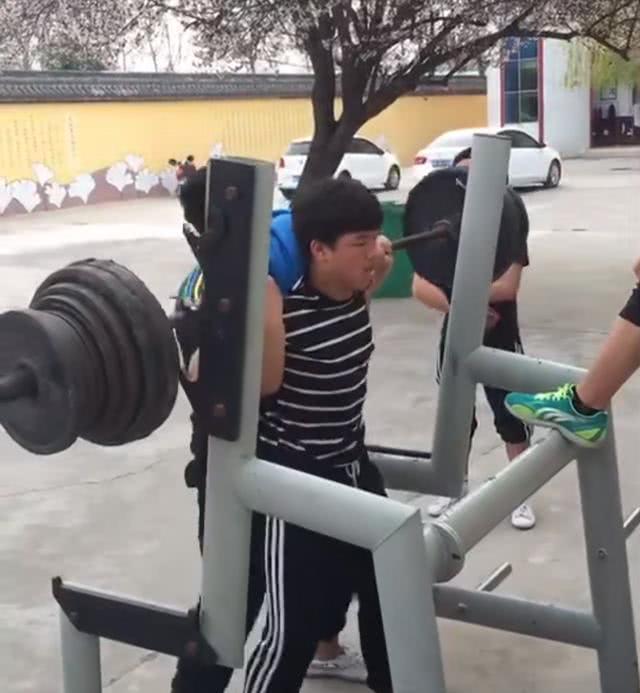
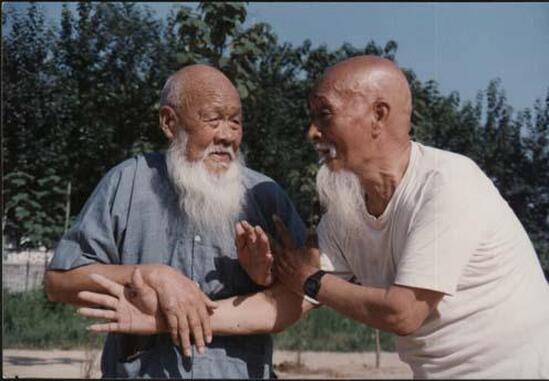
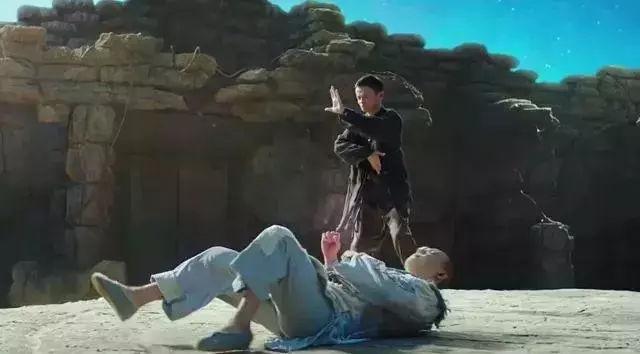
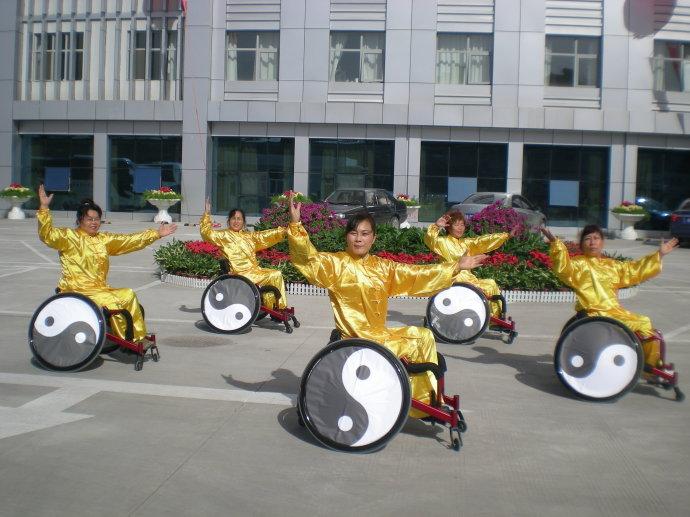
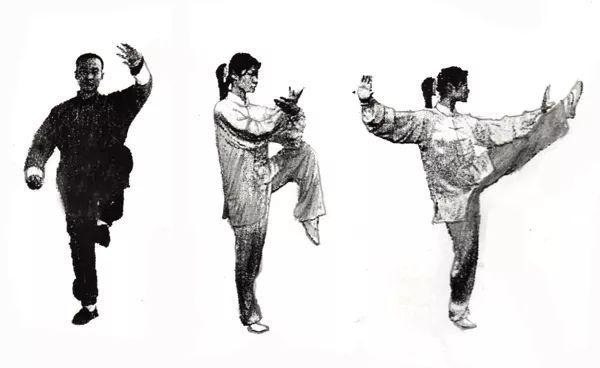
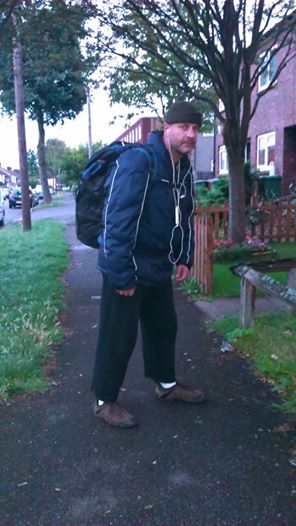
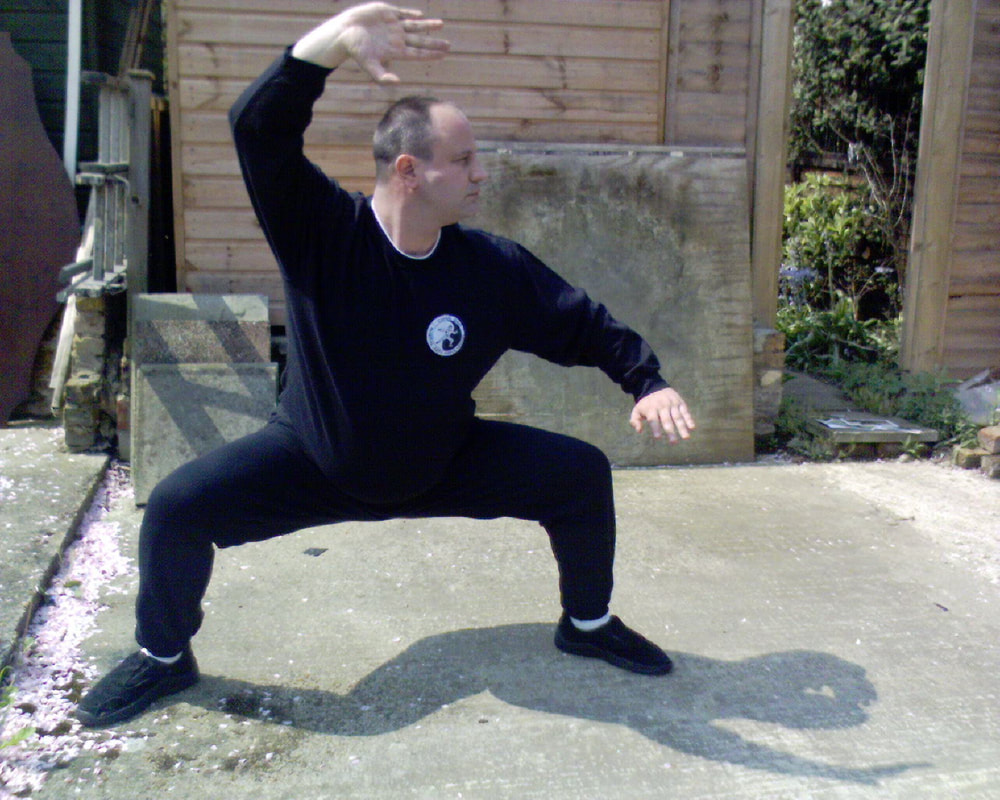
 RSS Feed
RSS Feed